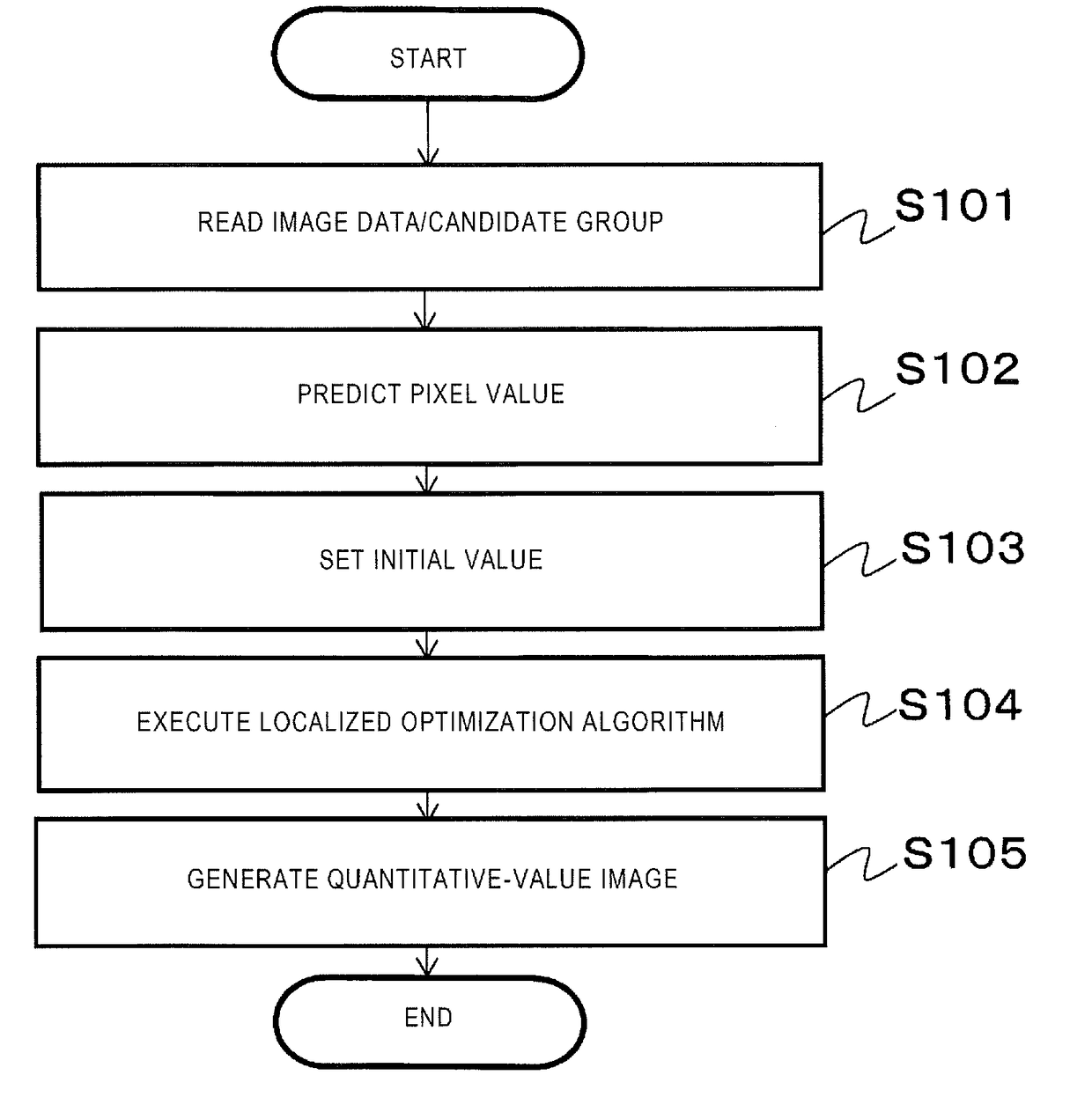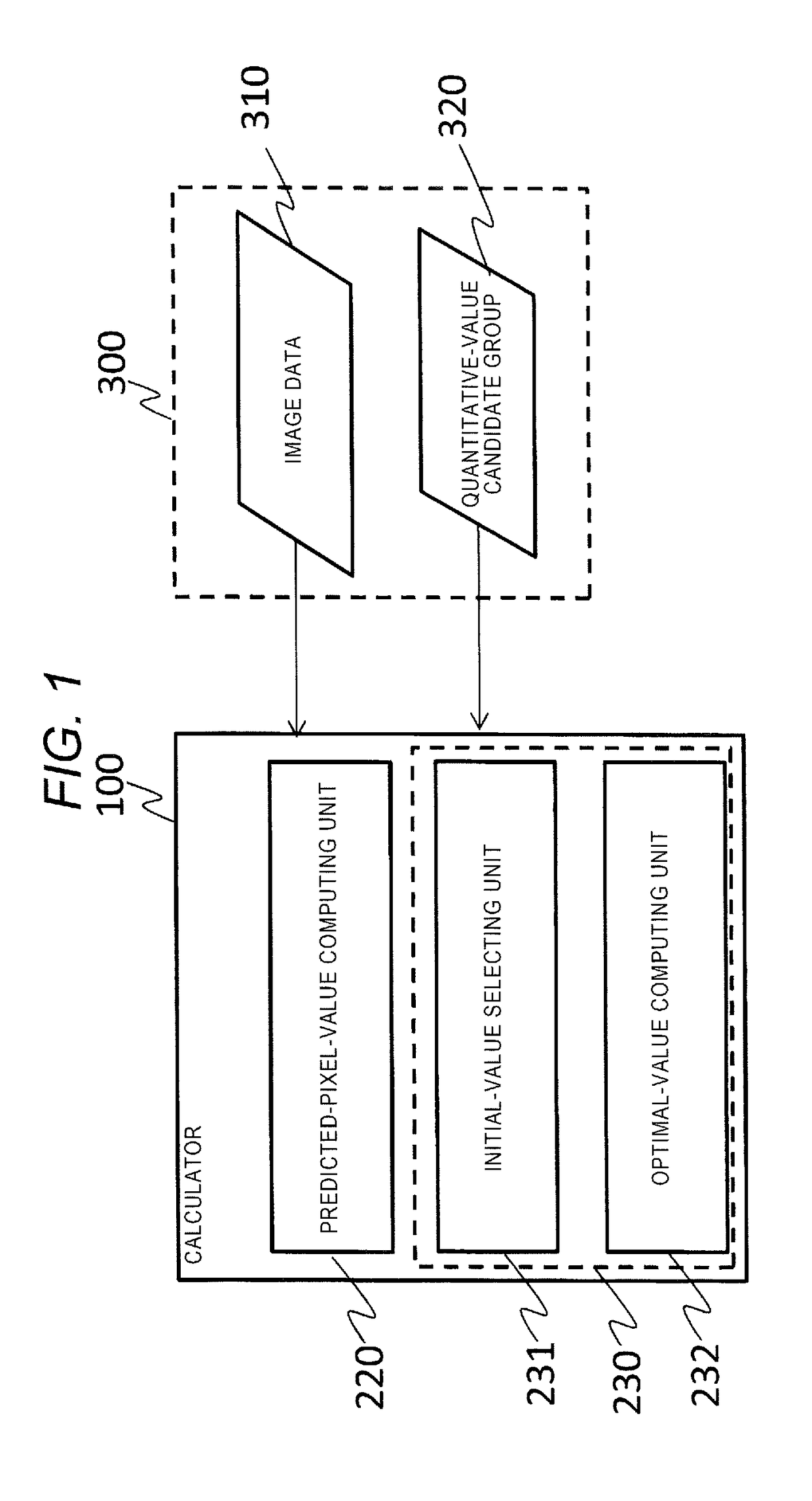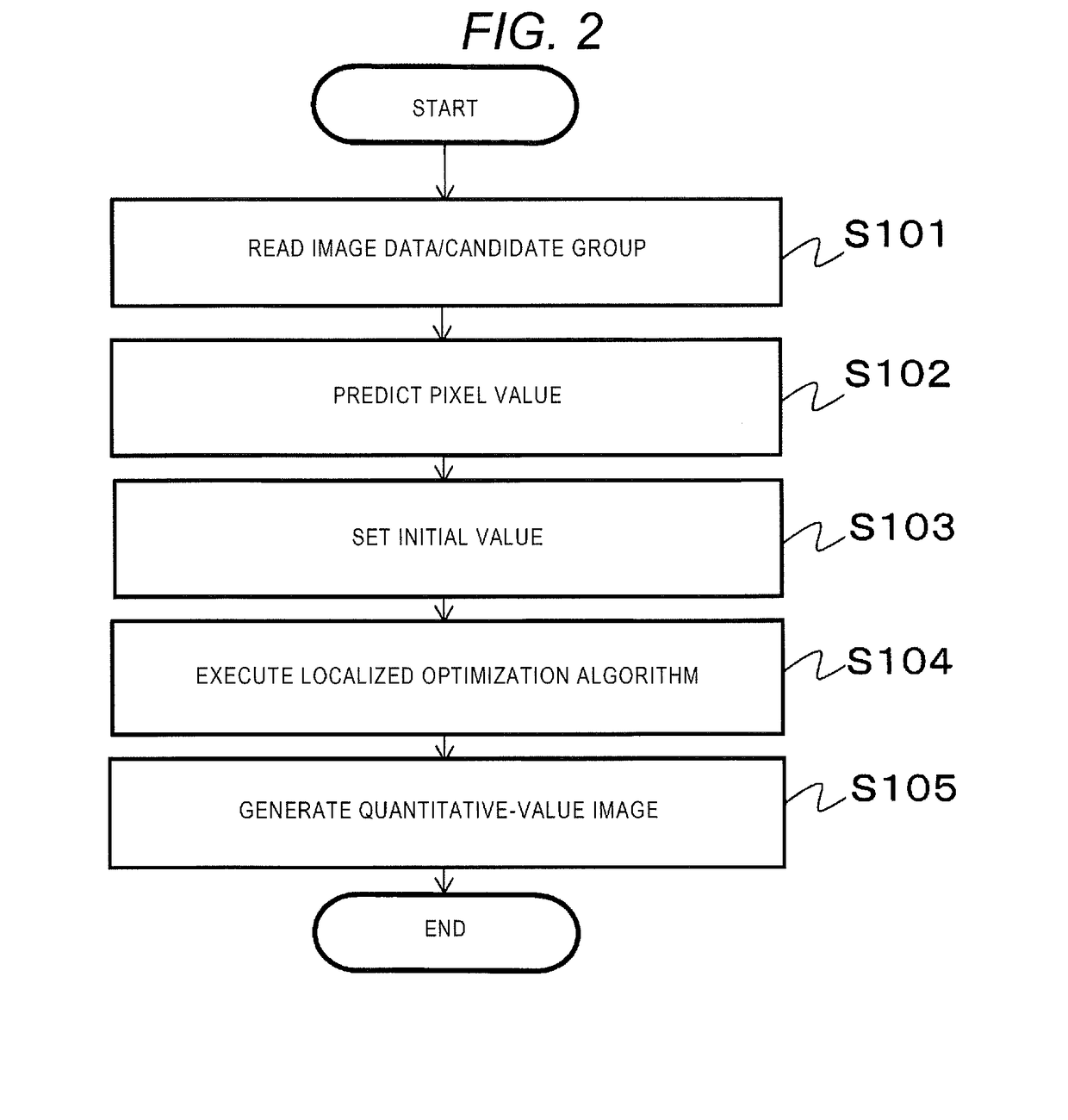Magnetic resonance imaging apparatus and quantitative-value computing program
- Summary
- Abstract
- Description
- Claims
- Application Information
AI Technical Summary
Benefits of technology
Problems solved by technology
Method used
Image
Examples
first embodiment
[0029]The embodiment is characterized by a calculator that performs quantitative value calculation using a plurality of images having different pixel values, which are obtained by performing imaging a plurality of times with different imaging parameter values in the same pulse sequence, the calculator including: a predicted-pixel-value computing unit that predicts a predicted value of a pixel value that is acquired from the imaging parameters in the imaging performed the plurality of times; an initial-value selecting unit that selects a quantitative-value candidate group which is used as initial values in quantitative value calculation from a plurality of predetermined quantitative-value candidate groups with reference to the pixel value predicted by the predicted-pixel-value computing unit; and an optimal-value computing unit that computes a quantitative value through a localized optimization technique using the initial value selected by the initial-value selecting unit. In additio...
second embodiment
[0041]The MRI apparatus of the embodiment includes the imaging unit, a measurement control unit that controls the imaging unit and measures data that is required for the quantitative value computation, and the calculator that performs the quantitative value computation. The measurement control unit performs imaging a plurality of times with different imaging parameters in the same pulse sequence, and acquires a plurality of images (image data) having different pixel values. The calculator includes the quantitative-value computing unit that performs the quantitative value computation by using information of the plurality of image data acquired through imaging and the predetermined quantitative-value candidate groups.
[0042]First, an entire configuration of the MRI apparatus that is common in the embodiments of the invention including the embodiment is described with reference to FIG. 4. FIG. 4 is a block diagram illustrating a common configuration of an MRI apparatus 10. The MRI appar...
third embodiment
[0091]The MRI apparatus of the embodiment is characterized in that the calculator is provided with separate means for computing a specific quantitative value, of the plurality of the quantitative-value candidates which are to be calculated, and thereby the computation speed is further improved. The MRI apparatus of the embodiment basically has the same configuration as the first embodiment. Hereinafter, a configuration different from that of the first embodiment will be described with a focus thereon. In addition, in the embodiment, a case where the separately computed specific quantitative value is the proportionality coefficient is described.
[0092]As illustrated in FIG. 9, a calculator 110C of the embodiment includes the configuration illustrated in FIG. 5A or 5B, in which the quantitative-value computing unit 230 further has a proportionality-coefficient computing unit 233 that computes an initial value of the proportionality coefficient. Except for this, the components assigned ...
PUM
 Login to View More
Login to View More Abstract
Description
Claims
Application Information
 Login to View More
Login to View More - R&D Engineer
- R&D Manager
- IP Professional
- Industry Leading Data Capabilities
- Powerful AI technology
- Patent DNA Extraction
Browse by: Latest US Patents, China's latest patents, Technical Efficacy Thesaurus, Application Domain, Technology Topic, Popular Technical Reports.
© 2024 PatSnap. All rights reserved.Legal|Privacy policy|Modern Slavery Act Transparency Statement|Sitemap|About US| Contact US: help@patsnap.com










